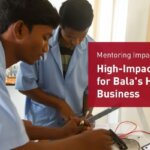The rate at which an organization learns may be the only sustainable competitive advantage. . . . If you are learning more rapidly than the competition, you can get ahead and stay ahead. (Garvin & Edmondson, 2008)
Every organization faces some kind of competition. Manufacturers compete for market share and for talent. Retail businesses compete for space and for customers. Hospitals compete for patients, staff, and government as well as private funding. Colleges and universities compete for faculty, students, and for funding. Government agencies compete for funding and talent.
This competition can come from global, virtual, and newly formed rivals. Airbnb is shaking up the hospitality industry. Uber is providing an alternative to taxis. Coursera is challenging popular notions about a college education. Health care providers from around the globe are attracting patients with lower cost surgeries and treatments. New competitors in every sector are cropping up daily.
Marcia L. Conner and James G. Clawson in their chapter in the book, Creating a Learning Culture, write this about competition and learning:
Today it seems that organizations need to be able to do more than just adapt: they must become agile in the face of constantly changing conditions. And if organizations are to respond intelligently, they must make learning a central part of their strategy for survival and growth. If they do not, the future looks more and more bleak; it will just be a matter of time. If, however, leaders and the people within the organization are learning all the time, faster than competitors, and applying the right strategies at the right times, the organization has hope. (p.326)
“Learning all the time” means making learning part of the culture of an organization. This means that learning (using Schein’s definition of culture) is one of the underlying assumptions of the organization, that everyone is expected to continually develop their knowledge and skills, that learning is valued and expected at all levels of the organization, that learning is ingrained in the routines and rituals of employees. Asking questions and giving feedback is just what people do. Sharing successes and failures is done openly and without risk of disapproval. Employees tell stories that dramatize what they are learning. Action learning permeates all team activity. Performance reviews are focused on learning and capacity building. Managers encourage their direct reports to acquire new knowledge and skills and apply that learning in the organization.
These are signs of a learning culture. A learning culture isn’t a program; it’s all of these things and more. An organization that is creating and maintaining this kind of culture is ready to compete in the world today and in the future.
Stephen J. Gill, Ph.D., is an independent consultant with over 25 years experience in employee training, performance improvement, and organization development.




























